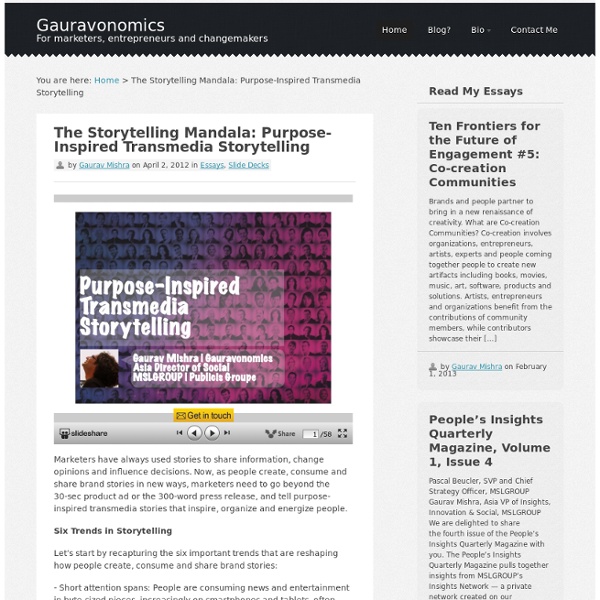The Participatory Documentary CookBook: community documentary using social media
“A participatory documentary tells a story about a community using the community’s own words. That story is disseminated back to that community via social media.” (Weight, 4:2011) Now available free, it is a textbook for creating participatory documentaries using social media. Introduction and context: “My students and I have been making participatory documentaries for some years in my course Transient Spaces (part of the Master of Communication Degree at RMIT University, and an elective in other programs). Lecture about structure, social media and tools for making a participatory documentary, mostly derived from the Participatory Documentary Cookbook Useful resources: Jenny Weight Personal Blog: Downloadable document: Slideshare: community, cookbook, documentary, geniwate, Jenny Weight, participatory, RMIT University, social media
25 Ways To Plot, Plan and Prep Your Story
I’m a panster at heart, plotter by necessity — and I always advocate learning how to plot and plan because inevitably someone on the business side of things is going to poke you with a pointy stick and say, “I want this.” Thus you will demonstrate your talent. Even so, in choosing to plot on your own, you aren’t limited to a single path. And so it is that we take a look at the myriad plotting techniques (“plotniques?”) you might use as Storyteller Extraordinaire to get the motherfucking job done. Let us begin. The Basic Vanilla Tried-And-True Outline The basic and essential outline. The Reverse Outline Start at the end, instead. Tentpole Moments A story in your head may require certain keystone events to be part of the plot. Beginning, Middle, End A Series Of Sequences Chapter-By-Chapter For novel writers, you can chart your story by its chapters. Beat Sheet Mind-Maps Happy blocks and bubbles connected to winding bendy spokes connected to a central topical hub. Zero Draft Write A Script Collage
TRANXMEDIA | Summit
Dummies Guide to Writing a Transmedia Production Bible
OK not really a Dummies guide as there are some complex elements in here, but one has to use whatever memes are in vogue A few weeks ago I was commissioned by Screen Australia to write a very basic structure & guide for producers relatively new to multi platform content to structure & document their propositions, after they have developed the ‘audience centric’ concepts. This has just been published on the Screen Australia site as a digital resource for those needing to document projects for transmedia productions. Background? I had already been using a range of structures in my 17 years as cross media producer (BBC, MUVEDesign, GaryHayes.TV etc:) and lecturer (recently Multi Platform course lead at LAMP, Australian Film TV and Radio School, Metro Screen & many international workshops). The writing guide is free to download from the Screen Australia site, link below the introduction. And Just for fun: Get your Transmedia brains working. Instructions for above:
Transmedia Storytelling
“Transmedia storytelling” is telling a story across multiple media and preferably, although it doesn’t always happen, with a degree of audience participation, interaction or collaboration. In transmedia storytelling, engagement with each successive media heightens the audience’ understanding, enjoyment and affection for the story. To do this successfully, the embodiment of the story in each media needs to be satisfying in its own right while enjoyment from all the media should be greater than the sum of the parts. Before expanding on how to create transmedia experiences, let’s ask ourselves two questions: Why would you want to tell stories? Why Tell Stories? We tell stories to entertain, to persuade and to explain. Our minds do not like random facts or objects and so they create their own stories to make sense of otherwise discrete, isolated events and items. Great stories win hearts and minds. Why Multiple Media? Join the Community & Sign-up for the Beta Trial! Next >>



